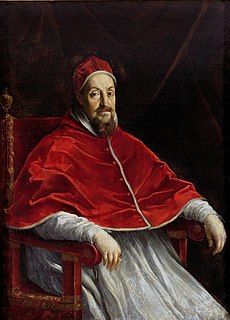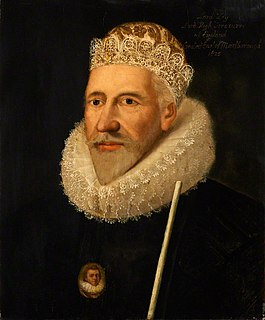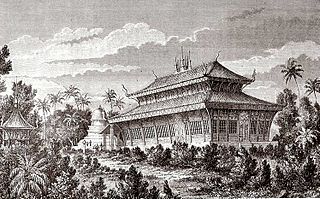Related Research Articles

Osman II, also known as Osman the Young, was the Sultan of the Ottoman Empire from 1618 until his regicide on 20 May 1622.

Pope Gregory XV, born Alessandro Ludovisi, was head of the Catholic Church and ruler of the Papal States from 9 February 1621 to his death in 1623.

Maurice of Orange was stadtholder of all the provinces of the Dutch Republic except for Friesland from 1585 at the earliest until his death in 1625. Before he became Prince of Orange upon the death of his eldest half-brother Philip William in 1618, he was known as Maurice of Nassau.

Sir Henry Savile was an English scholar and mathematician, Warden of Merton College, Oxford, and Provost of Eton. He endowed the Savilian chairs of Astronomy and of Geometry at Oxford University, and was one of the scholars who translated the New Testament from Greek into English. He was a Member of the Parliament of England for Bossiney in Cornwall in 1589, and Dunwich in Suffolk in 1593.

James Ley, 1st Earl of Marlborough was an English judge and politician who sat in the House of Commons at various times between 1597 and 1622. He was Lord Chief Justice of the King's Bench in Ireland and then in England and was Lord High Treasurer from 1624 to 1628. On 31 December 1624, James I created him Baron Ley, of Ley in the County of Devon, and on 5 February 1626, Charles I created him Earl of Marlborough. Both titles became extinct upon the death of the 4th Earl of Marlborough in 1679.

Songtham or Intharacha III was the King of Ayutthaya from 1611 to 1628 of the House of Sukhōday. His reign marked the prosperity of the Ayutthaya kingdom after it regained independence from Toungoo Dynasty, and saw the commencement of trade with foreign nations especially the Dutch and the Japanese. Songtham filled his guards with foreign mercenaries most notably the Japanese – Yamada Nagamasa.

Visoun was the king of Lan Xang from 1500 until 1520. He was the seventh son of King Sai Tia Kaphut, King of Lan Xang. He was appointed as Governor of Vientiane in 1480 and as Chief Minister with the title of Phya Sena Muang in 1491 with the reign name of Visoun (Lightning). He served as Regent for his minor nephew from 1495 to 1497. He deposed his nephew and was proclaimed as King in 1500. He ascended the throne and was crowned King in 1501. His reign was prosperous and peaceful with a large number of shrines and monuments being constructed, including the Maha Vihara of Wat Visoun, which he built to house the palladium of Luang Prabang, the Phra Bang, which had been at Vientiane since 1359. A number of important religious texts and literary works were composed or translated into Lao during his reign. He died at Vientiane in 1520.
Philip Wharton, 3rd Baron Wharton (1555–1625) was an English peer of the Wharton barony. Wharton was named after his godfather, Philip II of Spain.
Groom of the Chamber was a position in the Household of the monarch in early modern England. Other Ancien Régime royal establishments in Europe had comparable officers, often with similar titles. In France, the Duchy of Burgundy, and in England while French was still the language of the court, the title was varlet or valet de chambre. In German, Danish and Russian the term was "Kammerjunker" and in Swedish the similar "Kammarjunkare".

Samuel Ward (1577–1640) was an English Puritan minister of Ipswich.
The Lord President of Connaught was a military leader with wide-ranging powers, reaching into the civil sphere, in the English government of Connaught in Ireland, in the sixteenth and seventeenth centuries. The office was created in 1569, and in 1604 was reconstituted with full powers to hear all civil suits, to impose martial law and to proceed with "fire and sword" against the King's enemies. The width of his powers gave rise to clashes with the longer established courts: in 1622 he and the Lord President of Munster were ordered not to "intermeddle' in cases which were properly within the remit of those courts. He was assisted by a council whose members included the Chief Justice of Connacht, one or two associate justices and the Attorney General for the Province of Connacht. The office was abolished in 1672.
Nyaungyan Min was king of the Toungoo Dynasty of Burma (Myanmar) from 1599 to 1605. He is also referred to as the founder of the Restored Toungoo Dynasty or Nyaungyan Dynasty for starting the reunification process following the collapse of the Toungoo Empire.
Sir Thomas Pelham, 2nd Baronet was an English politician who sat in the House of Commons of England variously between 1621 and 1654. He supported the Parliamentarian cause in the English Civil War.
Sir Richard Norton, 1st Baronet was an English politician who sat in the House of Commons from 1621 to 1622. He supported the Royalist cause in the English Civil War.
Nawrahta Minsaw was king of Lan Na from 1579 to 1607/08, and the first Burmese-born vassal king of Lan Na. He was also an accomplished poet.
Voravongsa II was the king of the Laotian Kingdom of Lan Xa reigning from 1596 to 1621.
Tian Thala (?-1696) was the thirtieth king of Lan Xang between 1690(?) and 1695. His reigning title was Samdach Brhat Chao Devaniasena Chandralaya Raja Sri Sadhana Kanayudha.
Francesco Sacrati was a Roman Catholic prelate who served as Archbishop of Cesena (1622–1623), Cardinal-Priest of San Matteo in Merulana (1621–1623), and Titular Archbishop of Damascus (1612–1622).
History of the Reign of King Henry VII is a 1622 work by the English writer Francis Bacon. It charts the reign of the first Tudor monarch Henry VII who took the throne from his rival Richard III in 1485. At the time of writing Bacon had recently fallen from political power, and completed the work in late 1621 and sent a copy to James I. It was published the following year.
References
- ↑ This is a French corruption of the title Upayuvaraja, meaning "Great Joint King", or "Crown Prince", not a name. His reign and personal names are not known.
| Preceded by Voravongsa II | King of Lan Xang 1621–1622 | Succeeded by Photisarath II |